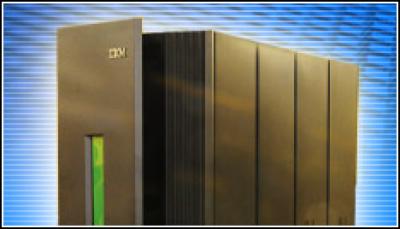The Roots Of IBM’s New Legal Mainframe Troubles

IBM has kept hold the mainframe market illegally, say critics, tying hardware and software, and witholding licences. The issue is under investigation now
Competition arose in the 1990s through plug-compatible manufacturers, but they didn’t last long. In this decade, IBM has seen its dominance in the mainframe space grow, with the systems continuing to hold huge amounts of legacy data that either can’t be migrated to non-mainframe systems or are too expensive to migrate. This will continue to be a problem as enterprises look to move to more modern computing models, such as cloud computing.
“Given the huge amount of legacy data that eventually will be accessed via the Web and in public and private clouds, IBM’s attempt to leverage its mainframe monopolies into these markets is critically important,” Black said. “No one company should be able to hold such large swaths of the country’s IT modernization efforts hostage through its exclusionary conduct.”
That conduct includes withholding software licenses and intellectual property from customers who use non-IBM hardware and closely tying its OS and hardware.
Targetting competitors
It also has targeted competitors that develop emulation technologies that allow mainframe workloads to run on non-mainframe systems. One company, Platform Solutions—which aimed to help mainframe workloads run on non-IBM servers powered by Intel’s Itanium chip—was sued by IBM in 2006 and then countersued. In 2008, IBM bought the company and put the technology on ice.
Another company, Neon, offers means to improve the performance of IBM mainframes, by allowing workloads to run on auxiliary processrs. IBM has done its best to block users from adopting this technology.
T3, which sold non-IBM systems to run mainframe workloads, is another company that’s filed complaints against IBM, with both U.S. and European regulators.
IDC’s Bozman said the evolution of the mainframe over the decades has made emulation software a difficult sell for some. By its nature, emulation software results in slightly poorer performance, and the highly transactional workloads that the mainframes run require the highest performance, she said.
“It’s the combination of the hardware and software [from IBM] that’s optimised to work together, and that’s when you get performance,” Bozman said.
Gordon Haff, an analyst with Illuminata, agreed.
“The mainframe has always been a tightly integrated platform, and IBM would argue that that is one of its strengths,” Haff said.
Over the past few years, IBM officials also have worked to open up the mainframes to other workloads, such as Java and Linux, and have rolled out systems aimed at midsized enterprises.
“Ironically, the mainframe is a more open platform now than it was back in the day,” she said.
However, the CCIA’s Black said that since 2001, prices for mainframes running legacy workloads have dropped only 13 percent per year, compared with 40 percent annually for other servers.
The business has been good for IBM. According to IDC, factory revenue for IBM System z mainframes was $5.3 billion, or nearly 10 percent of worldwide factory revenue of $53.3 billion. In addition, revenue from System z mainframes running IBM’s z/OS was just over $5 billion, or about the same amount as that from Unix high-end servers from Hewlett-Packard, Sun Microsystems, IBM and others.
Black is hoping regulators will see that much of IBM’s mainframe wealth comes from anti-competitive behavior. However, that won’t be easy, according to Illuminata’s Haff. Antitrust suits are difficult to prove, he said, including whether you can prove a company has a monopoly in a particular market.
“What determines a monopoly?” he said. “Is it only the mainframe [market at issue], or is it the large computer systems makers, or is it the mainframe market in the United States, or globally?”
In a case like this, there also isn’t a lot of precedence, Haff said.
“There is no flat-out law that says, if you are a computer maker, you must license your software to other hardware makers,” he said.